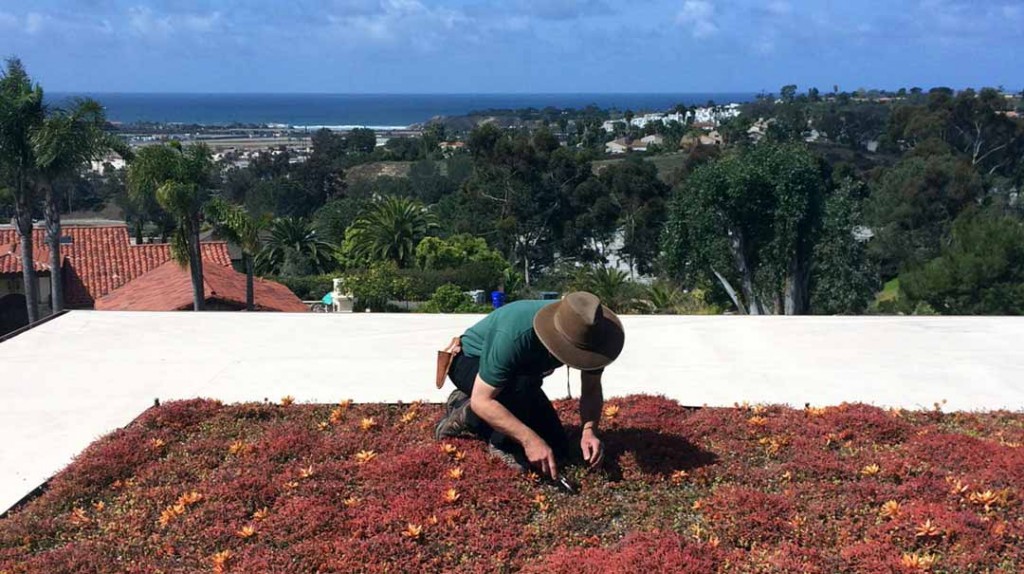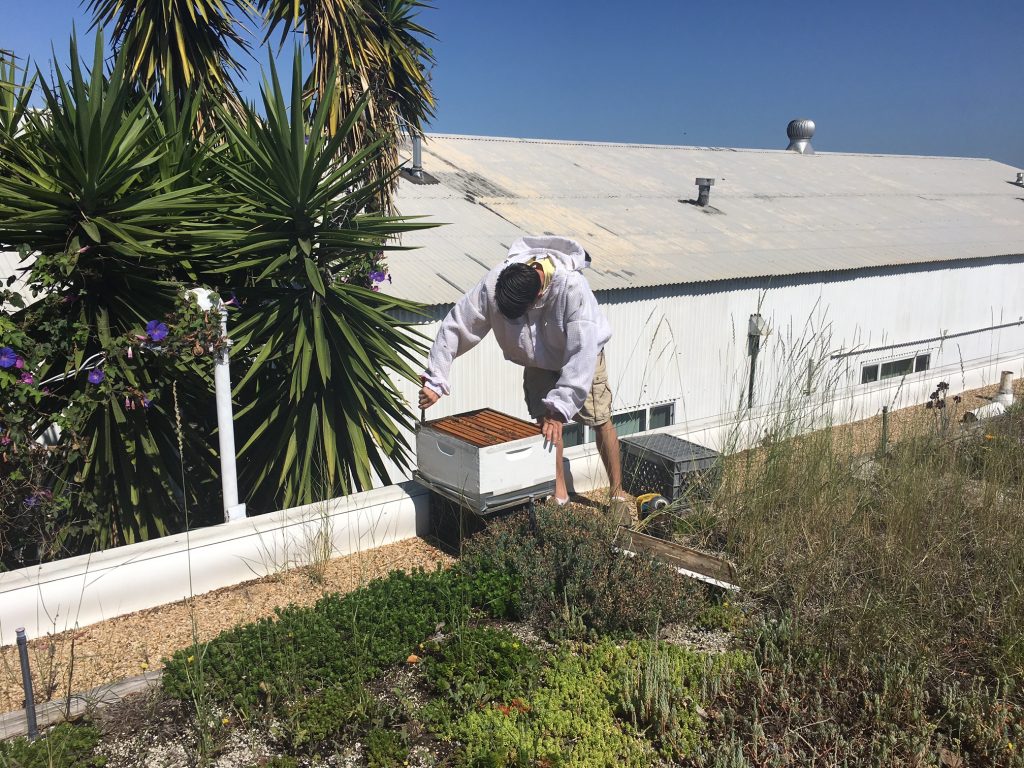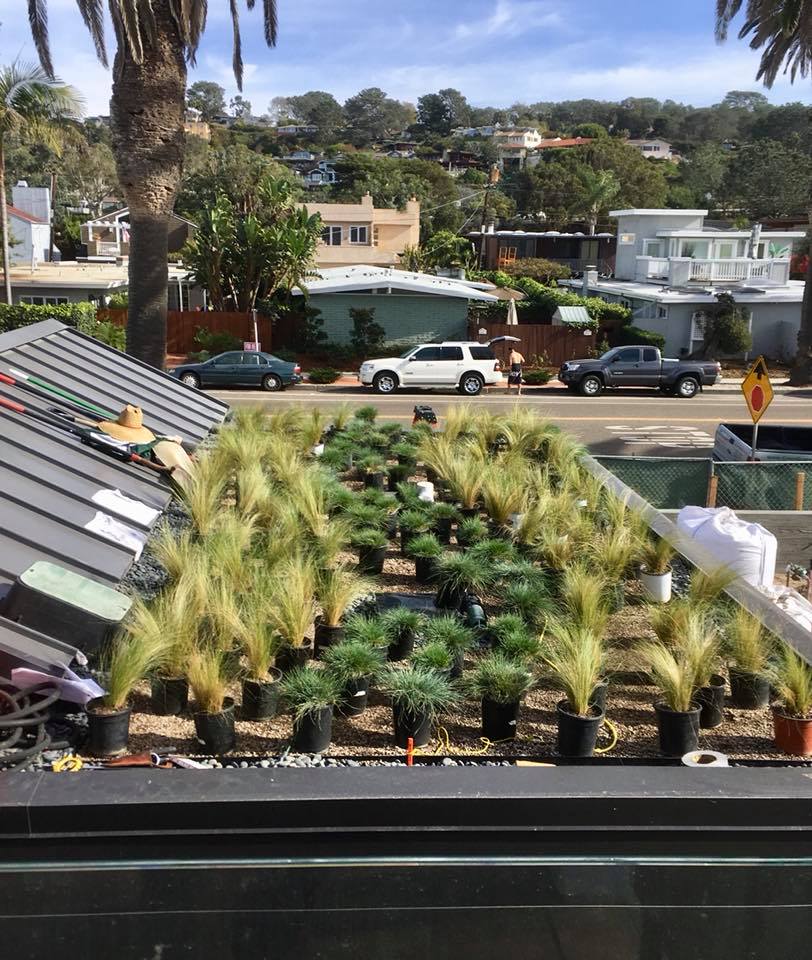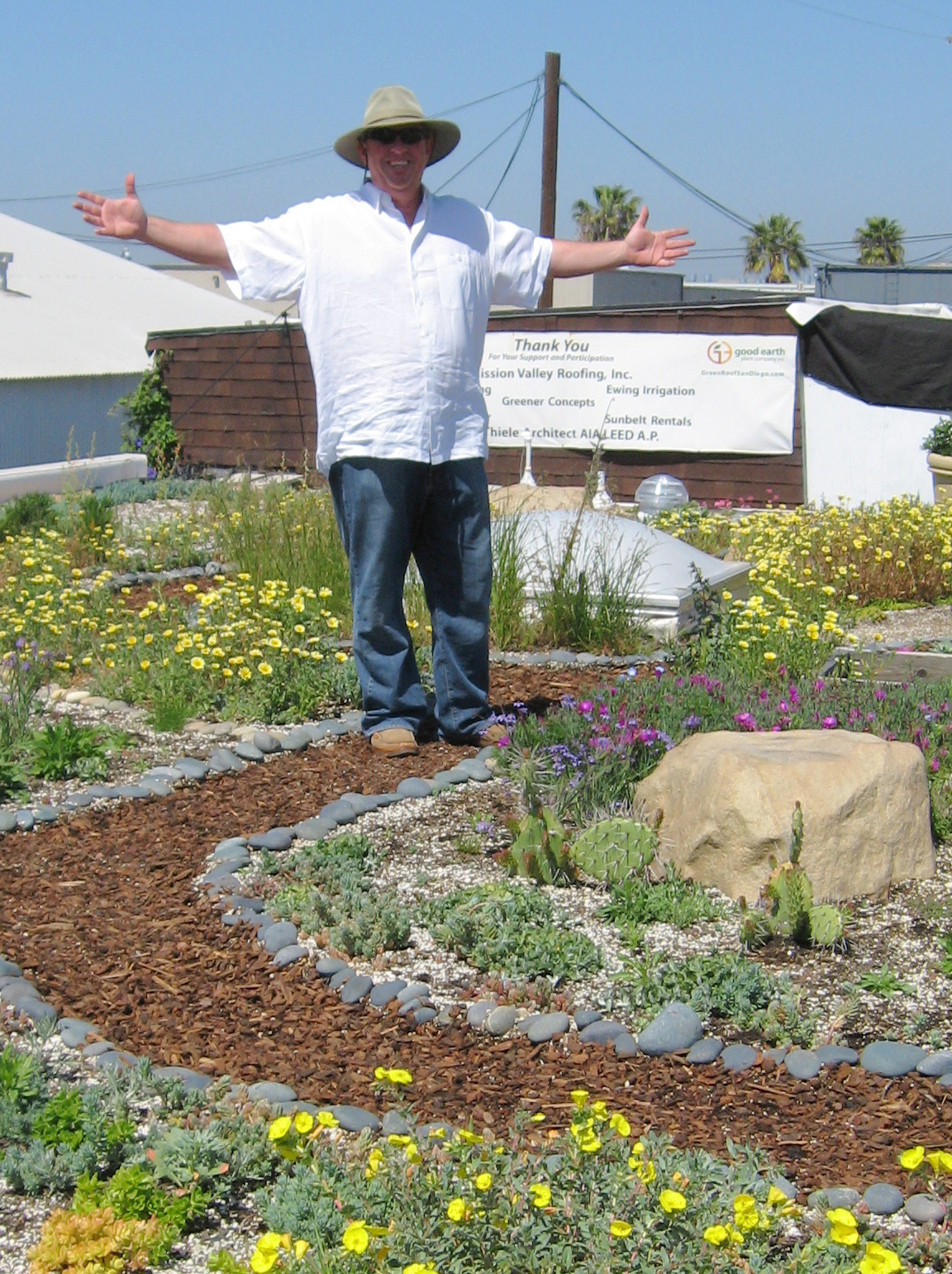The smart voters of Denver, Colorado are the first voters to pass their own Green Roof Initiative. It passed with 54 percent of the vote. The new city ordinance requires any building with more than 25,000 square feet of gross floor area under the roof to include green spaces. Fantastic!
But trust elected officials and civil servents to screw up even the best idea. Four months later there is a crazy amount of handwringing going on over how to make the new ordinance “work.” The Denver Department of Public Health and Environment has formed a review task fore including initiative supporters, water and power authorities, and “green roof experts.”
Hello, Denver – you should have called ME!

Hey Denver, Good Earth Plant Company has over a decade of experience with green roofs. This photo was taken on the first anniversary of our roof in March 2008.
The City of Denver doesn’t seem to have the experts available to answer basic questions a lot of us worked out long ago. Allow me to provide some of the answers you’re looking for.
City officials say green roofs are a “relatively new” concept. Maybe to Denver. Green roofs have been common in many areas of the United States and Canada for more than 20 years. Germany has been developing green roofs for 60 years, and Norway has been constructing green roofs for at least 200 years. In many parts of the world, green roofs have been a natural occurrence since humans started building structures to live in. I built my own green roof over 10 years ago.

A green roof like this one built by GreenScaped Buildings in San Diego can go a long way in minimizing stormwater runoff and pollution.
The city says it’s grappling with “what to plant,” and faces “a dilemma” of what to plant on the green roofs “without disrupting the ecosystem.” This is nothing more than fear mongering, and it’s ridiculous.
Are there no local horticulturalists in the entire City of Denver? Any will be familiar with the indigenous or other appropriate plants and can create an approved list. They will be familiar with the region’s micro and macro climates and know what will survive and thrive in shallow soil under harsh conditions.
Lawns and roses are reported as “popular” choices for these new spaces. This is a bad idea for multiple reasons. First, neither one is native to the area, and they won’t be able to survive the conditions on a green roof. Roses need far too much care and grass needs far too much water, fertilizer and maintenance.
There must be a real fear of insects at City Hall. Officials say the Green Roof Initiative doesn’t specify how to prevent foreign and invasive insect species or non-native animals from invading the city. Their big concern is the Japanese beetle, which loves lawns and roses. It’s been a problem in the Denver metro area. It’s pretty simple, folks: anything you plant on the ground that attracts Japanese beetles isn’t something you want to plant on a green roof.

Good Earth Plant Company added an urban beehive to our green roof in 2015. We’re looking for another one.
I can’t picture what kind of dangerous invasive animals Denver officials imagine being drawn to green roofs. My own green roof has been home to a wide variety of birds, butterflies, bees, insects – and I’m sure there have been the usual native rodents. But probably not many, because the native birds of prey likely picked them off quickly.
The only smart thinking going on in Denver is the suggestion of growing nothing but native species to promote a healthy local ecosystem. This may not be easy, and there are probably plants from similar climates that will do well.

The green roof on this Del Mar residence was planted with ornamental grasses ideal for the environment.
Take a look at this recent project in Del Mar. We didn’t use native ornamental grasses. But it will tolerate our dry climate and also hold up in the coastal breezes. It’s really not that difficult.
All of the problems being discussed about implementation of the Denver green roof ordinance add up to a lot of unreasonable fears. All these problems have been confronted and solved by others years ago. There are a lot of us out here who would love to help you get things rolling. Besides me, there is the organization Green Roofs for Healthy Cities. It isn’t too hard to find – it’s greenroofs.org. GRHC helped drive the initiative.
Based in Toronto, Green Roofs for Healthy Cities (GRHC) works to increase the awareness of the economic, social and environmental benefits of green roofs, green walls, and other forms of living architecture through education, advocacy, professional development and celebrations of excellence. It provides professional training and I’m proud to be a member.
So why don’t you plan a little trip to Toronto to see for yourself? Or you can bring me out to Denver for a trip and I’ll help set you straight. Denver can be one of America’s great green roof cities. P.S. Feel free to look at the Green Roofs page on our website.
.

